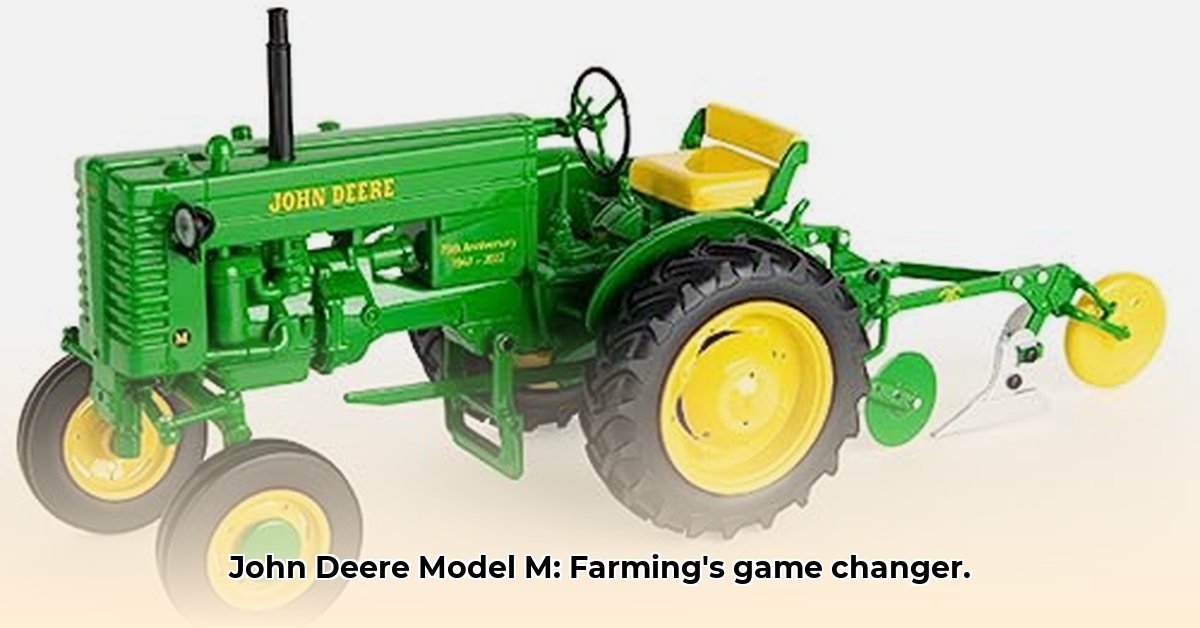
The Model M: A Post-War Workhorse
The John Deere Model M tractor, produced from 1947 to 1952, wasn't just another piece of farm equipment; it was a symbol of post-World War II agricultural resurgence. Farmers, returning from the war and facing the monumental task of rebuilding their farms, found in the Model M a powerful ally. This wasn't your grandfather's slow, cumbersome tractor. Built in Dubuque, Iowa, it offered increased speed, efficiency, and innovative features that significantly impacted agricultural practices. Its production run of approximately 45,799 units speaks volumes about its widespread adoption and success. But what truly set the Model M apart? For more on John Deere's impact on farming, see this page.
The Touch-O-Matic: Revolutionizing Hydraulic Control
One of the Model M's most significant innovations was its Touch-O-Matic hydraulic system. Before its introduction, controlling farm implements was a physically demanding and often dangerous task. Imagine manually lifting and maneuvering heavy plows – difficult, strenuous, and risky. The Touch-O-Matic changed this. This innovative system offered effortless control of implements, dramatically increasing productivity and enhancing operator safety. It was a game-changer, akin to adding power steering to a plow. How did this impact farmers' daily work? It likely reduced fatigue and the risk of injury, boosting both efficiency and morale.
Unraveling the Mystery: Defining the Model M's Horsepower
While the Model M's impact is undeniable, some details remain elusive. The exact horsepower rating, for example, is a subject of ongoing debate among enthusiasts and historians. Sources cite figures ranging around 18 horsepower, with some suggesting slightly higher or lower values. These inconsistencies reflect the challenges of obtaining precise technical data from that era, where testing methods lacked standardization. But—wasn't the engine's power only part of the Model M's story?
Beyond Horsepower: Contextualizing the Model M's Success
The Model M's significance extends beyond its horsepower. Its two-cylinder gasoline engine, while efficient for its time, pales in comparison to modern diesel engines. It also lacked synchronized gears, which made shifting somewhat challenging. However, these limitations are overshadowed by its revolutionary Touch-O-Matic system and its overall reliability. It represented a significant leap forward in agricultural technology, even with its minor drawbacks. What aspects of the Model M's design made it so successful despite these limitations? It's a testament to its innovative features and robust construction.
A Lasting Legacy: Influence and Preservation
The John Deere Model M's influence resonates far beyond its production years. Its design principles directly impacted subsequent John Deere models, shaping the future of agricultural machinery. Its enduring legacy makes it a crucial part of our agricultural history. Today, meticulously restored Model Ms are highly sought-after by collectors, testament to its historical value and enduring appeal. Why do you think collectors and historians remain so fascinated by the Model M? Its impact is far-reaching and undeniable.
Further Research: Uncovering the Full Story
The story of the John Deere Model M is a compelling blend of innovation, practicality, and historical significance. While certain details remain uncertain, its overall impact is undeniable. Continuing research into its design, manufacturing, and its effect on farming practices will undoubtedly reveal even more nuanced insights into its lasting legacy. Further research may uncover additional details about the tractor's design and its impact on post-war agricultural practices. The story of this iconic machine is far from complete.
Key Takeaways:
- The John Deere Model M tractor, produced from 1947 to 1952, revolutionized post-war farming.
- Its innovative Touch-O-Matic hydraulic system significantly improved efficiency and safety.
- While the exact horsepower remains debated, its overall impact on agricultural productivity is undeniable.